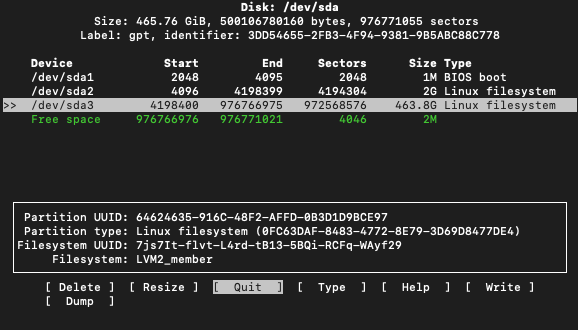1. Preparation
- Switch to root user
sudo su - Check the current available HDD sizes
df -h![[clone_HDD_01.png|The HDD to be cloned/dev/mapper/ubuntu--vg-ubuntu--lv]] - Check if the system supports SSD or not using the following command. Most Linux distributions support SSD hardware. It would be a good practice to avoid compatibility issues. You can read the documentation of your Linux distro requirements using the
HOME_URLtext. Use the following commandcat /etc/os-release![[clone_HDD_02.png|Check the website theHOME_URLpoints to. ]] - Backup the host HDD using the
ddcommand. Firstly, we should check which disk and partitions hold the Linux system. This is especially so if we have more than one disk on the machine. For that purpose, we can usecfdiskcommand. Follow the blog post to create image of your entire HDD to avoid data loss.
2. Creating clone of the old HDD to the SSD
Shut down the computer. Connect the SSD to the computer where the HDD to be cloned. Open Terminal check the destination SSD path using the cfdisk command.
Be aware, dd command is dumb!
It copies the whole partition block to another drive as it is. E.g: You have source, 500GB HDD with 200GB available space. The target device must be identical to the source device. Otherwise you will have issues.
Copy the destination path of the SSD and type the following command;
sudo dd if=/dev/sda3 of=/path/to/destination_SSD status=progress
After the dd command wait until the process finished. Then, you can shutdown the computer and use your cloned device. If you need to shrink the size of your source drive to make it fit into the target device, it would be better to prefer third party apps like GParted. If you need to shrink the source drive size, you can refer to the video tutorial.